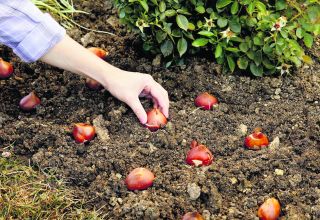The garden undergoes a lot of change in November, as its colours begin to fade, and it becomes a little less productive than it was in late summer. It is often a chilly month when winter feels very much just around the corner. Frosts have done their work and most plants are resting. This is the month to plant your tulip bulbs for flowering in spring.
If you’re busy cutting back and tidying borders this month, add your waste material from the garden to your compost heap or bin. You could also use the collected leaves to make leaf mould; place them in a reusable bin bag with a few puncture holes and leave them to decompose for up to two years.
Use this month as an opportunity to plant bare-root trees shrubs and roses and to clean or repurpose any pots, trays or troughs you don’t plan on using to help with the organising of the shed in preparation for the busy spring months that are just around the corner.
Most of all, don’t forget to stop and enjoy the autumn colours and foliage now as it can be truly spectacular!
1. Keep winter salads protected
Winter salads, such as ‘Grenoble Red’ lettuce, mustards and corn salad, all produce much better crops of leaves if they’re protected during winter. Fleece might seem the obvious choice, but it rips easily in windy weather, so you may prefer to use insect-proof mesh held up in a low curve by wire hoops. You shouldn’t need to water at this time of year, but keep an eye out for slugs, which like to nibble the leaves.
2. Leave the garden a little on the wild side
If you are tidy-minded, it might go against the grain to leave the perennials standing, but in a month’s time you will find that certain plants have made fine winter skeletons and can be left until February or March. Fennel and miscanthus, verbena and teasel make good hibernacula for beneficial insects and their seed keeps the birds going in the cold periods as well as providing winter interest. It really does make a great deal of difference to the garden.
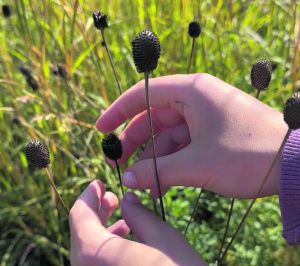
3. Still time to go out seed collecting
There will still be time to harvest your own seed. It is fun and very cost effective, but it takes a little understanding and planning.
Seedheads can ripen quickly, and must be watched carefully in order to collect the seed before they are dispersed.
As a rough guide, seed is set about two months after flowering.
Some seed is collected when well-developed but immature and green, such as Anemone nemorosa, calendula and Ranunculus.
The plants from which you collect seed must be healthy and vigorous. This will help ensure good quality.
Usually only species “come true” from seed – seedlings from a hybrid will be extremely variable.
Most seed germinates best if sown as soon as it ripens, whereas seed harvested while immature will not germinate.
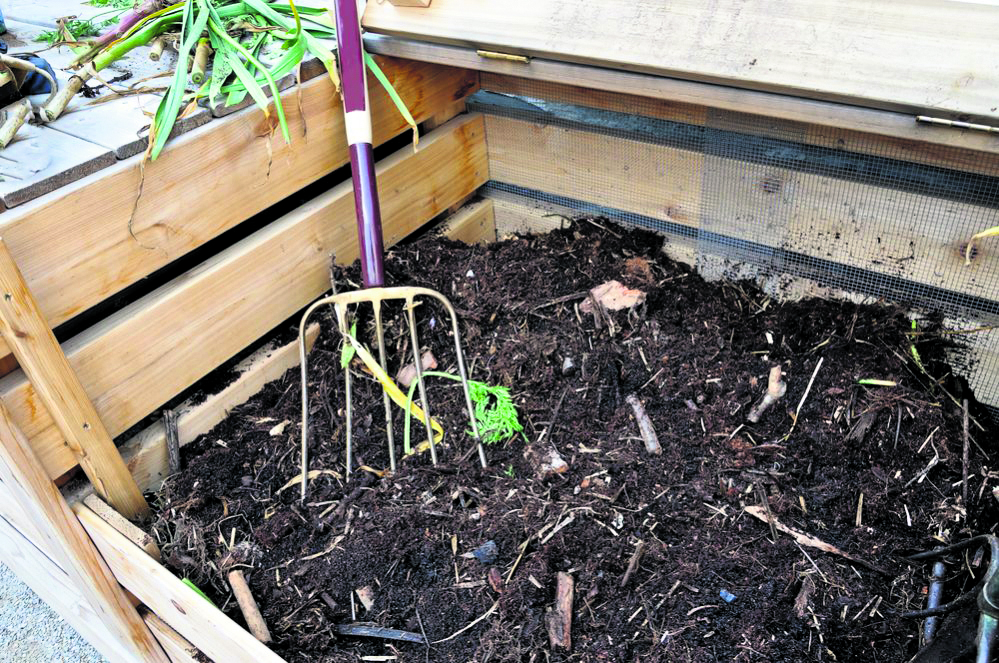
4. You must turn your compost heap
It is important to try and turn your compost heap once in the winter. It’s hard work but makes a worthwhile difference as it speeds up decomposition. It only needs to be done once and is a way of introducing oxygen to the heap. This feeds the bacteria, which promotes further decomposition. It’s also a good opportunity to break up any lumps you find and mix the ingredients. The easiest way to do it is to dig out the whole heap with a fork and move it into an empty neighbouring bin.
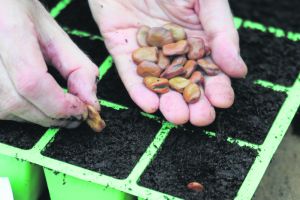
5. Sow broad beans in deep soil
A must do November job is to sow broad beans in deep module trays, with the aim of seedlings being about five cm high by the new year. This small size makes them more weather hardy than larger plants. The reason for the deep module tray is that broad beans quickly put out a long root. Sow in a greenhouse until mid-November and then the plants can go out before or even after Christmas. Sowing them in autumn rather than February means you should have an earlier crop. If the winter is very hard and the autumn-sown plants fail, you can always sow more in February. Remember not to sow too many seeds, as broad beans plants are multi-stemmed and give lots of pods.
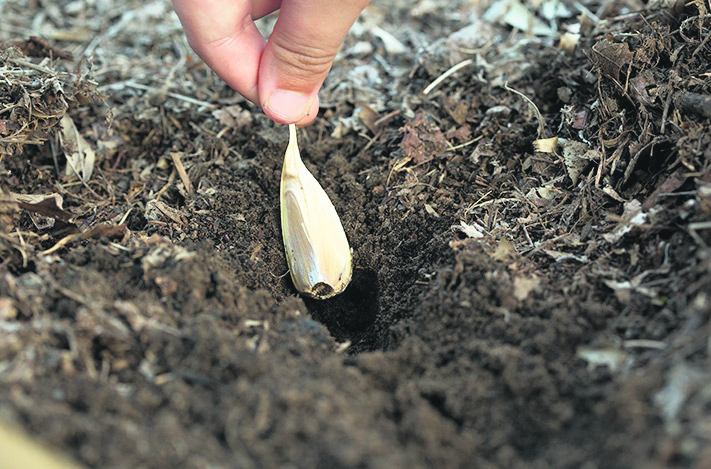
6. Plant garlic – a key job this month
Garlic likes a period of cold so November is the perfect time to plant it for a heavy crop next year.
This easy-grow crop needs a cold winter period in the soil for the individual cloves to develop clusters that will turn into bumper bulbs come next summer.
Autumn planted garlic is always bigger and better than that planted in the spring.
Garlic will grow in the poorest of soils as long as it is free draining. If you have heavy clay soil, plant into small pots and then re-plant into the garden in the spring. Plant directly into soil.
Using a cane or spring, mark out a planting row, then push individual cloves into the soil, so the tips are five cms below the surface and space them 15-20cm apart.
Cloves can rot off in waterlogged clay soil over winter, but don’t let this stop you. If you have clay soil, plant cloves in small pots, filled with good quality compost.
7. Mulch autumn’s bare soil
As you clear summer crops on the vegetable patch, increase the bed’s fertility for veg by mulching with organic matter, such as garden compost or spent mushroom compost. Apply a five cm-deep layer and leave the worms to drag it into the soil.
8. Put away the lawn mower
By November, the weather should be cold enough for the lawn not to need regular cutting, although it usually needs an occasional tidy-up during winter. Clean the underside by scraping off dried clippings and make sure the collecting bag is empty. If it’s a petrol mower, drain off the fuel, as unleaded petrol doesn’t store well.
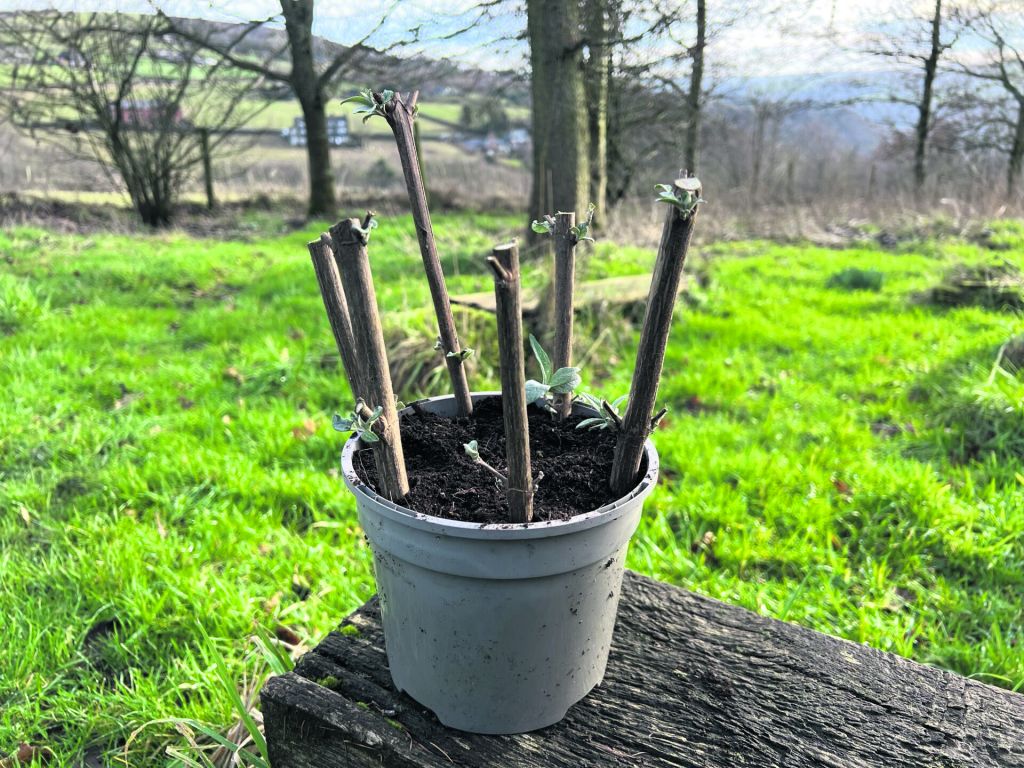
9. Hard wood cuttings – the time is right
The period between early November and the end of the year is the best time to take hard-wood cuttings. As soon as the leaves have fallen, take cuttings at pencil length and pencil thickness. Make a clean cut immediately below a bud and a sloping cut above to tell top from bottom. Plunge to half their depth in compost or a trench in open ground if you don’t have a frame. Vines, cornus, willow, buddleia and fig will be rooted by spring and ready for potting by mid-summer.
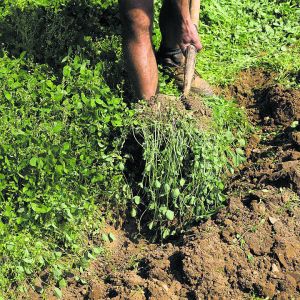
10. Boost spring soil with a green manure
If you want to improve the texture and soil conditions for future vegetable crops then green manure is an increasingly popular option which can be grown over winter and then cut down and dug in during spring. They also keep weeds at bay over the winter. The popularity of green manure has meant there is a wide choice on the market, most are very easy to grow and it’s not too late to still sow in November if the local weather conditions are still favourable.
11. November is a vital month for pruning
- Prune your roses. Cut off most of the year’s growth and take out large woody stems.
- Cut peonies back to promote healthy growth next spring.
- Cut back and tidy borders and make a note of any changes, additions or divisions you wish to make next spring whilst the thought is fresh in your mind, as it’s hard to remember back to how it looked once spring comes around.
- Divide perennials that flower before midsummer’s day, such as oriental poppies, peonies and lupins, as well as spring-flowering hellebores, pulmonarias and Solomon’s seal. Dig up, divide and replant straight away. Perennials that flower after midsummer are best divided in the spring – that’s a good general rule.
- Check any newly planted shrubs or trees, as if there’s been a frost this can sometimes lift them from soil. Deadhead pansies/violas/primulas regularly to keep the flowers coming.
- Tie in long, loose shoots of climbers to prevent them being damaged in high winds.
- Clear and dispose of any diseased rose leaves – don’t add them to the compost heap. Some roses hang on to their leaves. If these are diseased, try to pick them off. It helps to reduce blackspot next season.





